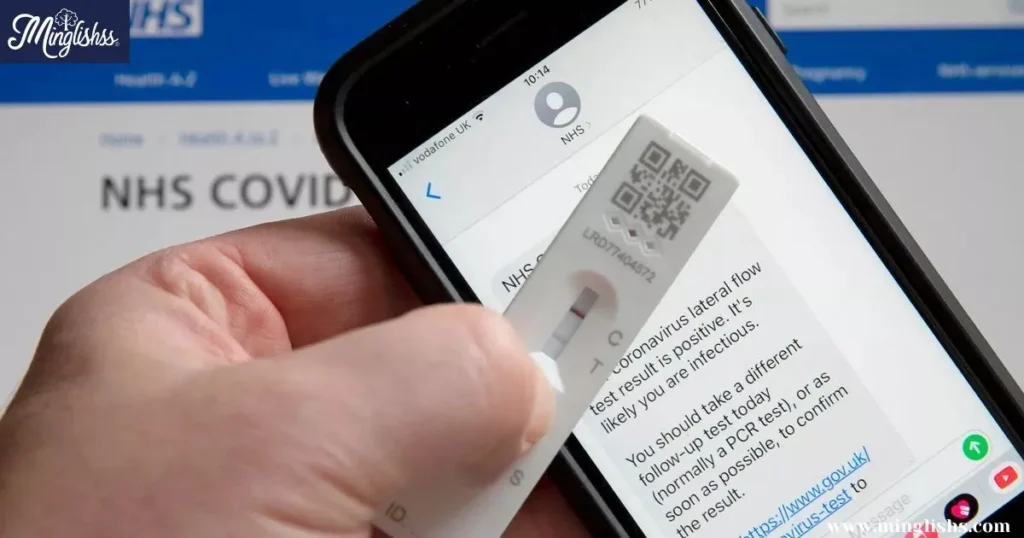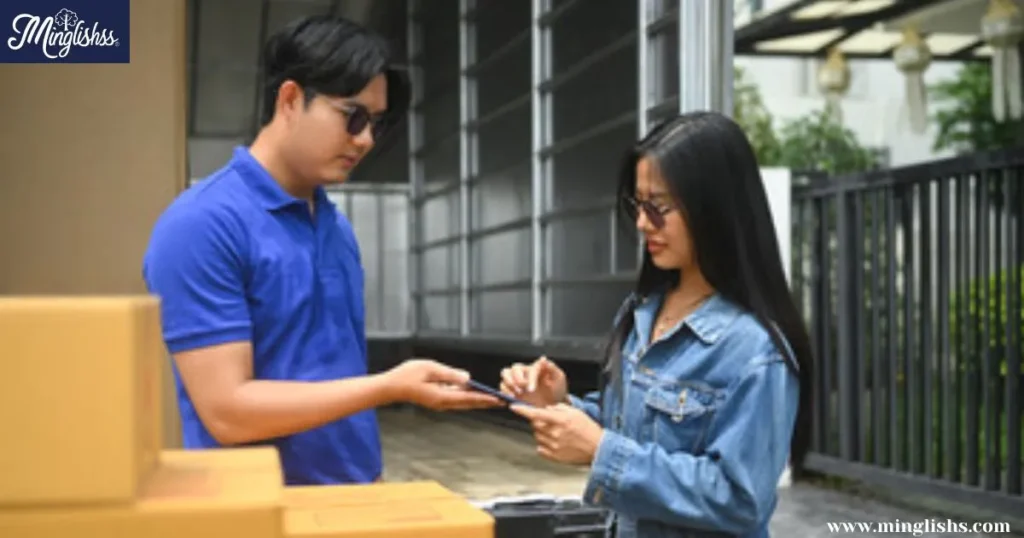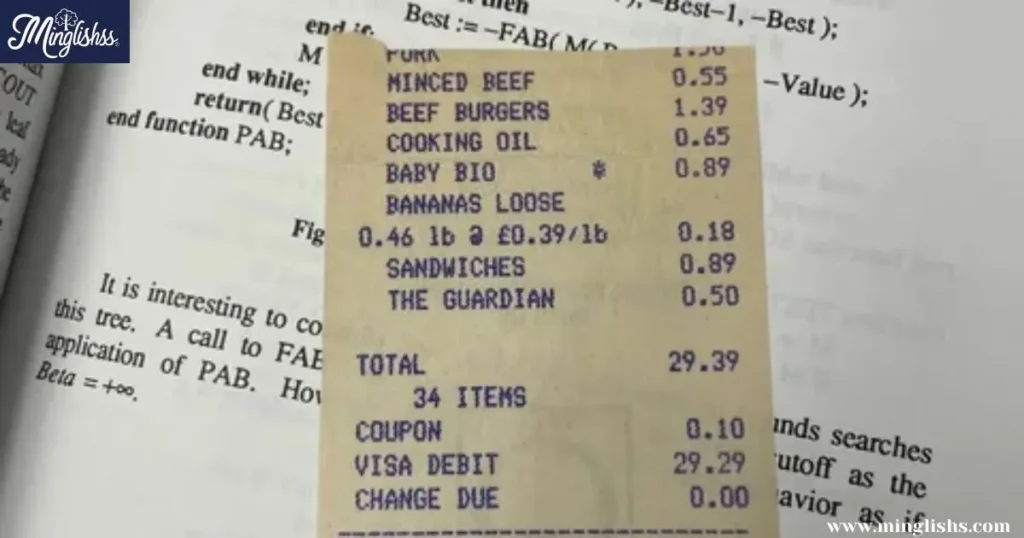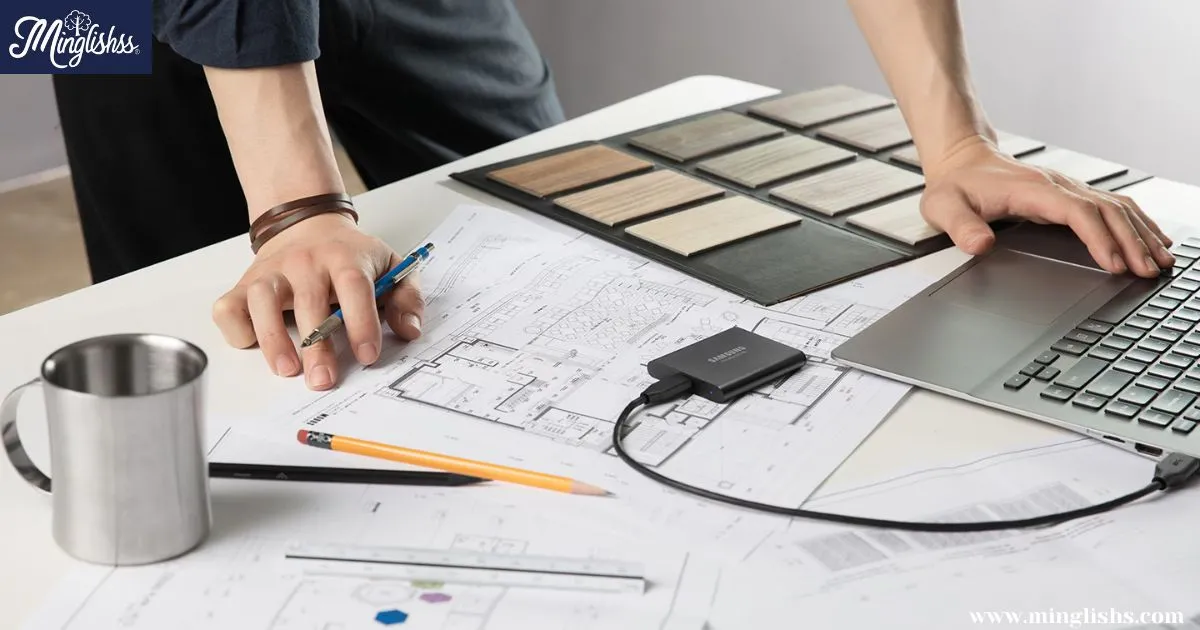‘Please confirm receipt’ in your emails for clearer communication.”
When communicating through email, one of the most common phrases you might encounter is “Please confirm receipt.” While it is simple and effective, there are many other ways to convey the same message. In professional settings, using varied language can improve communication and make your emails sound more engaging. It’s important to have several options for expressing this request, especially when trying to sound polite and considerate in your emails.
In this blog post, we’ll explore 35 different ways to ask someone to confirm that they’ve received your message. Whether you’re following up on a business proposal, seeking confirmation on a document, or just ensuring that your email didn’t get lost in the inbox, you’ll find plenty of alternatives that suit any context. Read on to discover how to rephrase this request in a more natural and diverse manner.
Understanding the nuances of language is vital in any professional exchange. By switching up your phrases, you can avoid sounding repetitive or overly formal. This blog will provide you with various options for phrasing that make your communication clearer and more personable. From direct approaches to polite variations, this guide will help you enhance your email skills and maintain professionalism in all your correspondence.
35 Ways to Say “Please Confirm Receipt”
1. Could you kindly acknowledge receipt of this?
Scenario: Emma has sent a detailed report to her boss and wants to confirm if it’s been received.
Explanation: A more formal and polite way to ask for confirmation. It emphasizes respect for the recipient’s time while still requesting the necessary acknowledgment.
Additional Tip: Use this phrase when you want to maintain a courteous tone, especially with higher-ups.
2. I would appreciate it if you could confirm receipt.
Scenario: Daniel is emailing a client regarding a contract and needs assurance that it has been received.
Explanation: This phrase expresses gratitude and implies that the confirmation is important to the sender.
Additional Tip: This phrase works well when you want to show appreciation for the recipient’s effort in confirming the message.
3. Please let me know if you have received this.
Scenario: Sarah has sent her colleague, David, an important email about a project update. She is waiting for confirmation.
Explanation: A direct and slightly informal way to request confirmation without being too rigid.
Additional Tip: This approach is great when communicating with peers or in a less formal environment.
4. Can you confirm that this has been received?

Scenario: Tom needs to ensure that his request for a meeting has been seen by his supervisor.
Explanation: A simple and straightforward way to ask for confirmation.
Additional Tip: This phrase works well when you want to get a quick response without unnecessary formality.
5. I would be grateful if you could acknowledge receipt.
Scenario: Jessica sends her project proposal to her manager, seeking confirmation.
Explanation: A polite and professional way to ask for confirmation. This phrase uses “grateful” to express appreciation.
Additional Tip: This can be useful when sending emails to clients or superiors where a tone of gratitude is important.
6. Could you please confirm that you received this?
Scenario: Brian has sent a customer a detailed invoice and needs confirmation that it has been received.
Explanation: It’s a polite way to ask for confirmation and ensures clarity in the request.
Additional Tip: This version is slightly more formal, making it ideal for business or professional contexts.
7. Please confirm whether this has reached you.
Scenario: Mary sent an email about the new team meeting schedule and wants to ensure it’s been received by all.
Explanation: A variation of asking if something has been received, adding a slight formal touch.
Additional Tip: It’s a good phrase to use when ensuring your email is noticed, especially with large groups.
8. Let me know when you’ve received this.
Scenario: John has just sent a time-sensitive memo to his team and needs confirmation urgently.
Explanation: A simple and clear request that also helps keep things moving quickly.
Additional Tip: This is perfect when you need a fast confirmation but don’t want to sound too demanding.
9. Please acknowledge upon receipt.
Scenario: Linda sends a proposal to her partner and expects confirmation for the next steps.
Explanation: A formal and concise phrase, commonly used in legal or business communication.
Additional Tip: Use this in more formal settings where brevity and professionalism are key.
10. Could you let me know if this has been received?
Scenario: Kevin emails a proposal to a potential client and is awaiting their acknowledgment.
Explanation: A slightly less formal variation that is still polite and clear.
Additional Tip: This can be used in casual business environments where the tone doesn’t need to be overly formal.
11. Kindly confirm receipt at your earliest convenience.
Scenario: Susan has sent an email with the new project deadlines to her team and needs confirmation.
Explanation: This adds a sense of urgency while still sounding polite and respectful.
Additional Tip: It’s useful when you need a confirmation, but are allowing the recipient some time to respond.
12. Please let me know once you’ve received this message.
Scenario: Mark emails his team regarding a system update and asks for a quick confirmation.
Explanation: A straightforward way to ask for confirmation, emphasizing that the sender needs to know once the message is received.
Additional Tip: This phrase is casual and can be used in environments where you communicate frequently with the recipient.
13. Would you mind confirming receipt of this?
Scenario: Zoe sends a reminder email to her supervisor and needs to know whether it was received.
Explanation: A gentle and polite phrasing that respects the recipient’s time.
Additional Tip: This is suitable when you’re aware the recipient might be busy, but you still require confirmation.
14. Can you kindly confirm if this was received?
Scenario: Greg has emailed an important presentation to a client and wants confirmation that it’s arrived.
Explanation: A respectful and polite request for confirmation, with a hint of formality.
Additional Tip: This is an excellent way to keep things professional without sounding overly stiff.
15. I would like to confirm that you’ve received this message.
Scenario: Alex emails a supplier and wants to ensure that an order has been processed.
Explanation: This is a more formal phrase that clearly requests confirmation.
Additional Tip: Ideal for official communications where confirmation is necessary.
16. Can you let me know when you’ve received this email?
Scenario: Olivia sends an email to a customer service department and is awaiting confirmation.
Explanation: A simple and friendly way to request acknowledgment.
Additional Tip: This works well in informal or semi-formal settings where the response time is expected to be quick.
17. Please inform me once this has been received.
Scenario: Emma needs confirmation that her legal documents have been acknowledged.
Explanation: A formal and precise way of requesting acknowledgment.
Additional Tip: This is appropriate for business correspondence where clear communication is important.
18. Please confirm when you’ve received this.
Scenario: James emails an update to his team and is awaiting confirmation.
Explanation: A concise way to ask for confirmation.
Additional Tip: Use this when you need to confirm receipt without sounding overly formal.
Other Ways to Say “Please Keep Me Updated”
19. Can you confirm receipt at your earliest convenience?
Scenario: Claire sends an email to her partner and wants a response when possible.
Explanation: This is a polite request for confirmation with flexibility regarding the timing.
Additional Tip: Ideal when you don’t require an immediate response but still want to ensure receipt.
20. Would you be so kind as to acknowledge receipt?
Scenario: Peter sends a request for approval and wants to ensure that it was received.
Explanation: A polite and slightly formal phrase often used in professional settings.
Additional Tip: Use this phrase when you want to be particularly respectful or formal in your communication.
21. you please acknowledge upon receipt of this?
Scenario: Linda has sent an update on a project’s progress to her team and needs confirmation that it has been received.
Explanation: This phrase asks for acknowledgment politely and can be used when the recipient’s confirmation is necessary before proceeding.
Additional Tip: It’s a great option when you want to sound both professional and polite without being too direct.
22. Please notify me if you’ve received this message.
Scenario: Rob emails a customer service team about a missing package and wants confirmation.
Explanation: This request is slightly formal, and it asks for a notification upon receipt, which may be suitable for formal communication.
Additional Tip: This is perfect for situations where you need the recipient to inform you once they’ve received the message, often in legal or business correspondence.
23. Let me know if this has been delivered to you.
Scenario: Anna has sent her resume to a company for a job application and is awaiting confirmation of receipt.
Explanation: A more casual alternative that uses the term “delivered” instead of “received.” It is ideal for situations where you want to keep the tone light.
Additional Tip: This can be used in informal email situations or when communicating with a colleague.
24. I’d appreciate it if you could confirm this has arrived.
Scenario: Alex sends an email with a report to a client and needs confirmation that it has arrived safely.
Explanation: This phrase adds a sense of gratitude while requesting acknowledgment.
Additional Tip: Use this when you want to remain polite and show appreciation for the recipient’s time.
25. Can you verify receipt of this message?

Scenario: Carla emails a department head to ensure that a crucial file has been received.
Explanation: This is a more technical way of requesting confirmation. It is effective in settings where precision and clarity are valued.
Additional Tip: It’s ideal for emails in corporate settings or when confirming the receipt of an important document.
26. Kindly confirm that you’ve received this communication.
Scenario: Steven is emailing a formal proposal to a client and needs to ensure it has been seen.
Explanation: A polite request using the word “communication” for a more formal tone.
Additional Tip: Use this when you want to communicate respectfully, especially in more formal or corporate scenarios.
27. Can you confirm receipt of this at your earliest convenience?
Scenario: Jasmine sends a follow-up email to a colleague who is busy with several projects.
Explanation: This request gives the recipient more flexibility on when to respond, showing that you understand their schedule.
Additional Tip: This phrase is perfect for situations where a response is needed but isn’t urgent.
28. Please let me know if you’ve received this message successfully.
Scenario: Mike emails his team the latest budget proposal and requires confirmation.
Explanation: A direct request for confirmation, ensuring that the recipient has received the email without technical issues.
Additional Tip: This is particularly useful when you want to confirm there were no issues in the email’s delivery.
29. Please confirm if this has come through to you.
Scenario: Jane sends a presentation to a client and is awaiting confirmation.
Explanation: This phrase implies that you’re checking if the email was delivered successfully.
Additional Tip: It’s casual but clear and can be used in less formal emails.
30. Please acknowledge receipt at your earliest convenience.

Scenario: Tom sends an email with a document needing review and waits for confirmation.
Explanation: A formal request for acknowledgment, adding a hint of urgency without being overly demanding.
Additional Tip: This phrase can be used in emails when you want the recipient to confirm receipt without feeling pressured.
31. Please let me know once you’ve had a chance to review this.
Scenario: Karen emails a proposal to a client and requests a confirmation when they’ve reviewed the content.
Explanation: This request combines confirmation with the need for the recipient to review the content, which is useful when following up on important materials.
Additional Tip: This is a great phrase when the recipient’s feedback is also important after confirming receipt.
32. Can you kindly verify that this message has been delivered to you?
Scenario: Rachel sends an update to her project manager and seeks confirmation of delivery.
Explanation: This phrase is a formal way of asking the recipient to confirm that the email has been delivered.
Additional Tip: This can be used in professional communication, especially when you need the recipient’s acknowledgment for record-keeping purposes.
33. I would appreciate your confirmation upon receipt of this.
Scenario: Olivia emails her supervisor with the final draft of a report and needs confirmation.
Explanation: This version is polite and professional, using “appreciate” to show gratitude for the recipient’s response.
Additional Tip: This is great when dealing with formal correspondence, like submitting official reports or documents.
34. Please confirm that this has been received at your earliest convenience.
Scenario: Daniel emails his team regarding a schedule change and seeks acknowledgment.
Explanation: This is a slightly formal phrase that offers the recipient flexibility while still ensuring confirmation.
Additional Tip: Perfect when you need a response but want to provide the recipient with enough time.
35. Could you kindly let me know if this has arrived safely?
Scenario: Emily emails a client a signed contract and wants confirmation it’s been received.
Explanation: A polite and slightly informal way to ask for confirmation, emphasizing the safe arrival of the document.
Additional Tip: This phrase works well in less formal business settings or when you want to convey that the safe receipt of the message matters to you.
Pros and Cons of Alternative Phrases
Pros:
- Variety in Communication: Having multiple options allows you to tailor your email depending on the recipient, creating a more personalized touch.
- Politeness: Some alternatives express gratitude and respect, which can help maintain positive relationships.
- Clarity: Different phrases may help you communicate your request more clearly based on the context.
Cons:
- Overuse of Formality: Sometimes, overly formal phrases can come off as stiff or impersonal, especially in casual environments.
- Misinterpretation: Some alternative phrases might be misunderstood if not chosen carefully, leading to confusion about the sender’s tone.
Conclusion
In conclusion, knowing how to phrase your request for confirmation of receipt is an essential communication skill. The 35 alternatives outlined in this blog provide various ways to ask for acknowledgment in different contexts, whether formal or informal.
By choosing the right phrase, you ensure clarity and maintain professionalism in your communication. It’s essential to understand the nuances of language and how to adapt your tone to fit the situation, making your emails more effective and engaging.

I’m Jane Austen, a language expert at Minglishs, dedicated to helping learners master English through engaging and accessible content. My passion for literature and teaching drives me to make language learning both enjoyable and effective.










